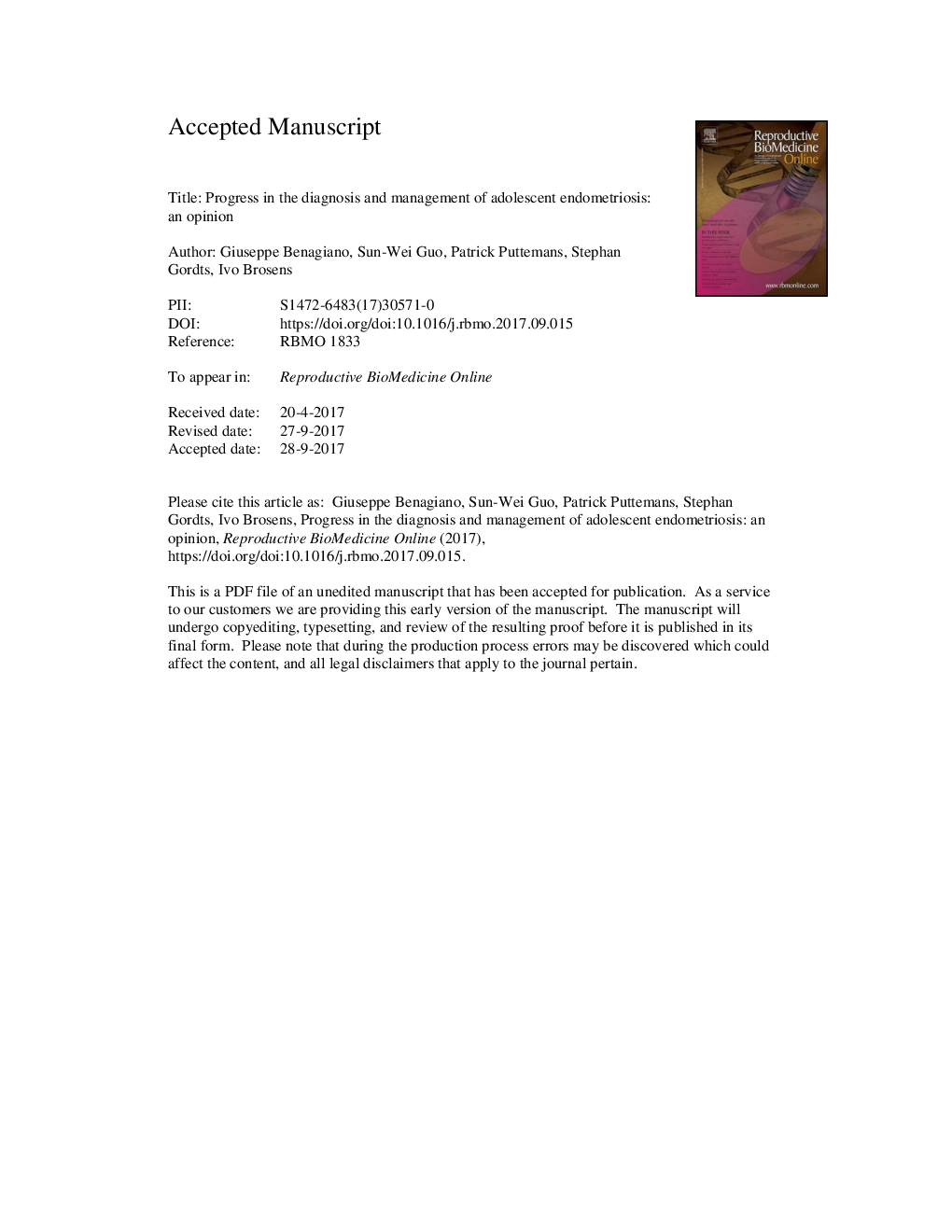| Article ID | Journal | Published Year | Pages | File Type |
|---|---|---|---|---|
| 8783969 | Reproductive BioMedicine Online | 2018 | 49 Pages |
Abstract
Increasing evidence indicates that early onset endometriosis (EOE), starting around menarche or early adolescence, may have an origin different from the adult variant, originating from neonatal uterine bleeding (NUB). This implies seeding of naïve endometrial progenitor cells into the pelvic cavity with NUB; these can then activate around thelarche. It has its own pathophysiology, symptomatology and risk factors, warranting critical management re-evaluation. It can also be progressive, endangering future reproductive capacity. This variant seems to be characterized by the presence of ovarian endometrioma. Today, the diagnosis of endometriosis in young patients is often delayed for years; if rapidly progressive, it can severely affect pelvic organs, even in the absence of serious symptoms. Given the predicament, great attention must be paid to symptomatology that is often non-specific, justifying a search for new, simple, non-invasive markers of increased risk. Better use of modern imaging techniques will aid considerably in screening for the presence of EOE. Traditional laparoscopy should be limited to cases in which imaging gives rise to suspicion of severity and a stepwise, minimally invasive approach should be used, followed by medical treatment to prevent recurrence. In conclusion, EOE represents a condition necessitating early diagnosis and stepwise management, including medical treatment.
Related Topics
Health Sciences
Medicine and Dentistry
Obstetrics, Gynecology and Women's Health
Authors
Giuseppe Benagiano, Sun-Wei Guo, Patrick Puttemans, Stephan Gordts, Ivo Brosens,
